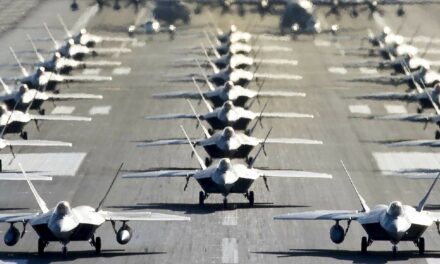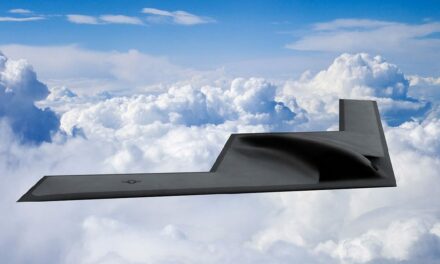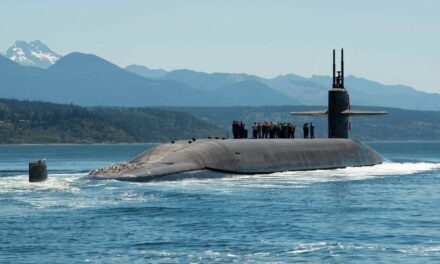We support our Publishers and Content Creators. You can view this story on their website by CLICKING HERE.
Key Points: The USS Enterprise (CVN 65) was the first nuclear-powered aircraft carrier, renowned for its versatility, combat effectiveness, and historical significance.
-Serving for over five decades, the “Big E” participated in critical missions such as tracking John Glenn’s Friendship 7 spacecraft, enforcing the Cuban Missile Crisis blockade, and launching air strikes during the Vietnam War.
-Equipped with advanced nuclear reactors and capable of carrying over 90 aircraft, the Enterprise demonstrated unparalleled operational longevity and innovation.
-Its legacy continues to serve as an enduring symbol of U.S. naval power and a benchmark for future carrier designs.
USS Enterprise: The Historic Aircraft Carrier That Redefined Naval Power
The USS Enterprise (CVN 65) holds a special place in the hearts of any enlisted sailor or naval officer who has served on aircraft carriers.
It was the world’s first nuclear-powered flat top. The Enterprise, or “The Big E” as it was affectionately known, conducted some of the most famous and diverse missions in history. It aided space flights, participated in the blockade during the Cuban Missile Crisis, and circled the globe without refueling. The Enterprise will go down in history as one of the most special ships in naval lore.
Let’s take a closer look at this fantastic aircraft carrier.
Do You Mean an Aircraft Carrier Has a Role in Space Flight?
The Enterprise burst onto the scene during its commissioning at Newport News, Virginia, in 1961. At the time, the space race with the Soviet Union had become a frenzy. The Russians had earlier sprinted ahead with Sputnik, but the United States was also forging along with unmanned and manned flight.
The first American orbital spacecraft took flight in 1962. Dubbed the Friendship 7 mission, the Enterprise played an important role in tracking astronaut John Glenn and the spacecraft’s exploits.
USS Enterprise: Key Ship During the Cuban Missile Crisis
Then, the world almost ended during the Cuban Missile Crisis of October 1962. The Enterprise would likely have launched its fighters and bombers to blow up the Cuban nuclear missile sites if President John F. Kennedy had ordered that operation.
However, it was decided that the U.S. Navy would blockade Cuba and stymie the Soviets with a quarantine. USS Enterprise was a critical part of the blockade mission, and the crisis was finally abated.
The aircraft carrier USS Enterprise (CVN 65) is underway in the Strait of Gibraltar. Enterprise is completing a deployment to the U.S. 5th and 6th Fleet areas of responsibility in support of maritime security operations and theater security cooperation efforts. The U.S. Navy has a 237-year heritage of defending freedom and projecting and protecting U.S. interests around the globe. Join the conversation on social media using #warfighting. (U.S. Navy photo by Mass Communication Specialist 3rd Class Daniel Meshel)
Shows What Nuclear-power Can Do
In October of 1964, the Enterprise would embark on another historic mission. It led the carrier strike group that circumnavigated the globe to show the Soviets that a carrier could conduct long-haul missions without refueling.
Operations During the Vietnam War Did Not Disappoint
The crew on the Enterprise was understandably fired up and ready for combat, which meant deployment to the seas off the coast of Vietnam.
The Enterprise was a main platform for F-4 Phantoms and A-6 Intruders that ensured the Viet Cong and North Vietnamese Army feared U.S. naval strikes.
Unfortunately, the Americans decided to leave Vietnam in disarray in 1975, and the Enterprise made sure all citizens were out of Saigon safely.
Entered Modern Combat Up to the Global War On Terror
The Enterprise got a rest from combat in the late 1970s but still patrolled the Pacific and Indian Ocean leading up to its deployment in the Mediterranean Sea against Libya. After that operation, the Enterprise entered a lengthy period of maintenance and re-fit.
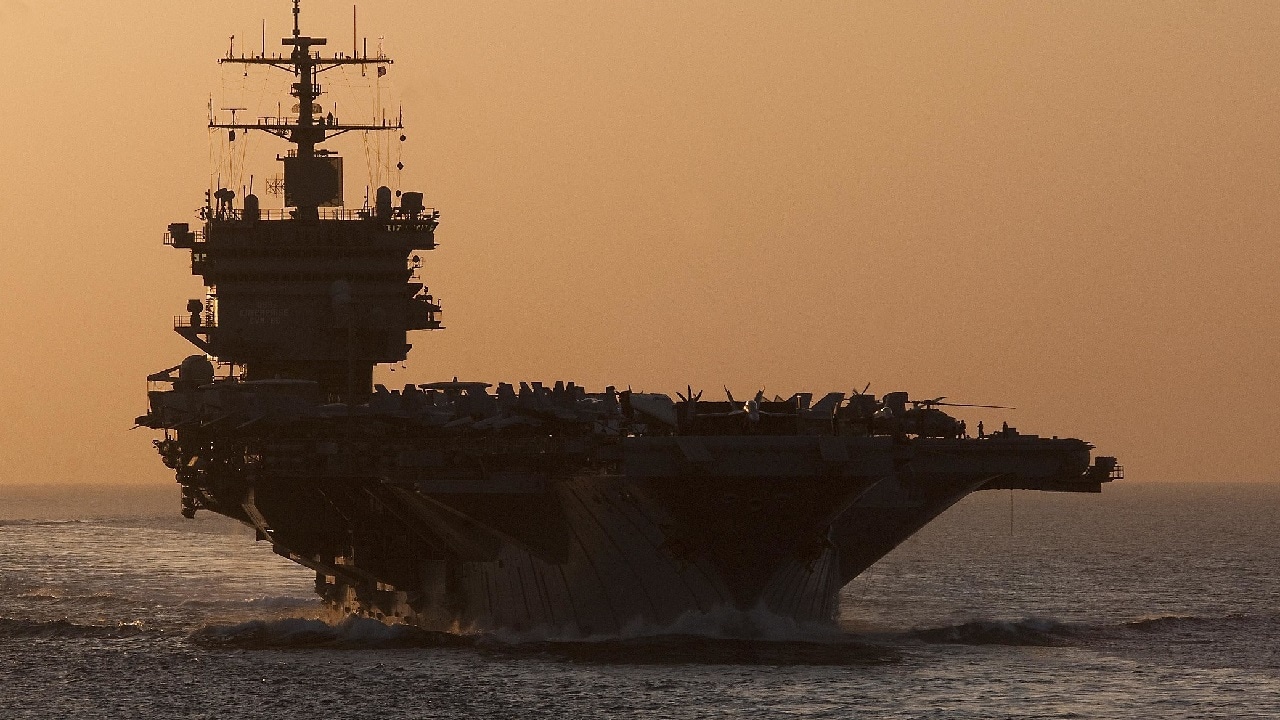
The aircraft carrier USS Enterprise, right, the guided-missile destroyer USS Porter (DDG 78) and the guided-missile cruiser USS Vicksburg (CG 69) transit back to their homeport of Norfolk, Va. Enterprise, Porter and Vicksburg are returning from a deployment to the U.S. 5th Fleet area of responsibility, where the ship conducting maritime security operations, theater security cooperation efforts and support missions for Operation Enduring Freedom.
The carrier was back in 1994 to enforce no-fly zones over Iraq and the Balkans. After a re-fit in 2008 to enable modern combat operations, the famous carrier was finally retired in 2012, but not before it participated in the wars in Iraq and Afghanistan.
Interestingly and adding to its lore and unique attributes, the Enterprise was the only ship of its class, and it set the stage for the Nimitz-class.
Quick Look at Specs
The Enterprise was 1,123 feet long and made for the most extended carrier in U.S. service.
Although the carrier was only supposed to serve 25 years, with ample maintenance, it served for a remarkable five decades, which is a testament to American shipyard workers and its various crews over the years.
The ship’s displacement was nearly 95,000 tons. It had a width of 252 feet and a deck space of 4.5 acres.
What Does ‘Triple 4’ Mean?
The USS Enterprise had what I call a “Triple 4” configuration. That’s “four aircraft elevators, four steam-powered catapults and four arresting wires. It had the ability to launch and recover aircraft simultaneously,” according to Naval-Technology.com.
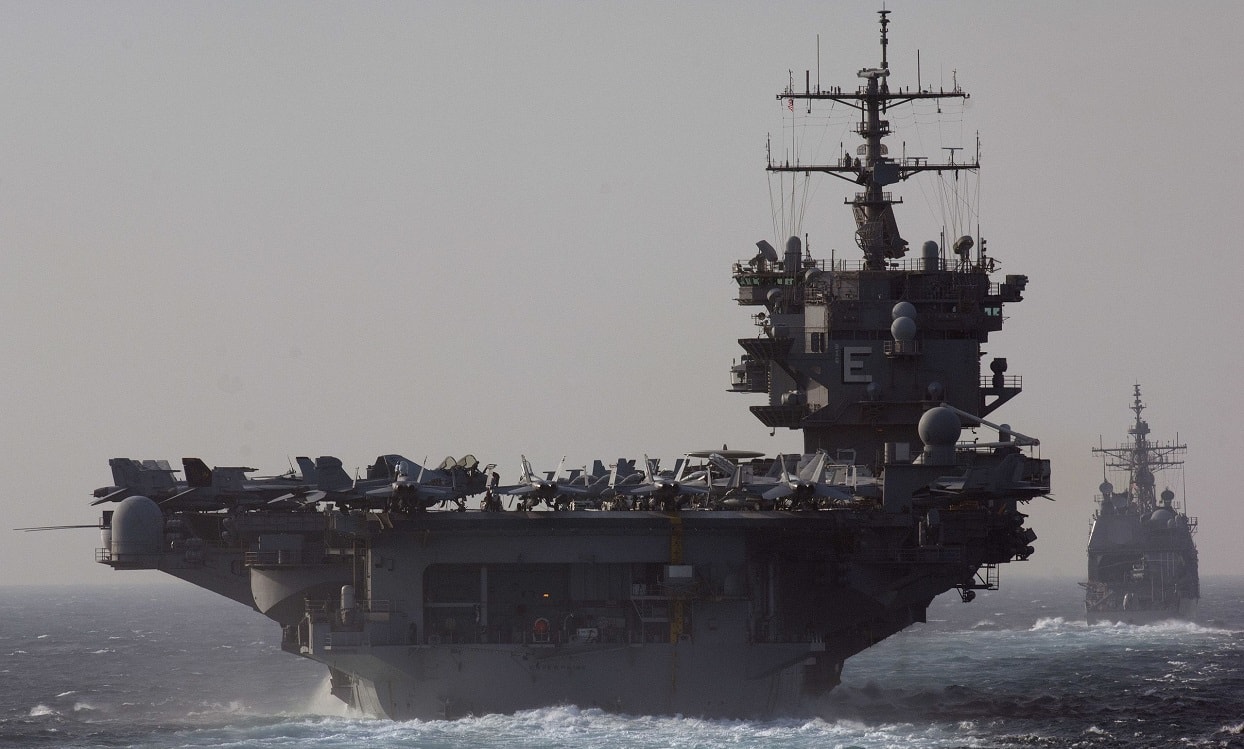
Image: Creative Commons.
Aircraft On Board
In the later years, the carrier could haul over 90 aircraft. This included four EA-6B Prowler electronic warfare aircraft, four E-2C Hawkeye command and control airplanes, five SH-60F Seahawk anti-submarine warfare helicopters, six S-3B Viking anti-submarine warfare aircraft, and 43 F/A-18 Hornet strike fighters.
Weapons and Reactors Made It More Powerful
That was one formidable force and a floating air base. It was also armed with Sea Sparrow surface-to-air missiles, Rolling Airframe Missiles, and the Phalanx Close-in Weapons System.
The Enterprise had eight Westinghouse second-generation A2W nuclear reactors. The four Westinghouse steam turbines pumped out 280,000 horsepower.
This vessel had a full-service life and sterling combat record. The USS Enterprise should leap into your imagination as a prime example of U.S. naval power projection and strength when you think of successful aircraft carriers. Without the Enterprise, the Navy would have been limited in its warfighting capability.
Its record should be studied at the U.S. Naval Academy, ROTC schools, and various training centers for enlisted sailors. So, hail to the Big E, one of the most unforgettable ships in naval history.
About the Author: Dr. Brent M. Eastwood
Brent M. Eastwood, PhD, is the author of Don’t Turn Your Back On the World: a Conservative Foreign Policy and Humans, Machines, and Data: Future Trends in Warfare, plus two other books. Brent was the founder and CEO of a tech firm that predicted world events using artificial intelligence. He served as a legislative fellow for U.S. Senator Tim Scott and advised the senator on defense and foreign policy issues. He has taught at American University, George Washington University, and George Mason University. Brent is a former U.S. Army Infantry officer. He can be followed on X @BMEastwood.

 Conservative
Conservative  Search
Search Trending
Trending Current News
Current News 